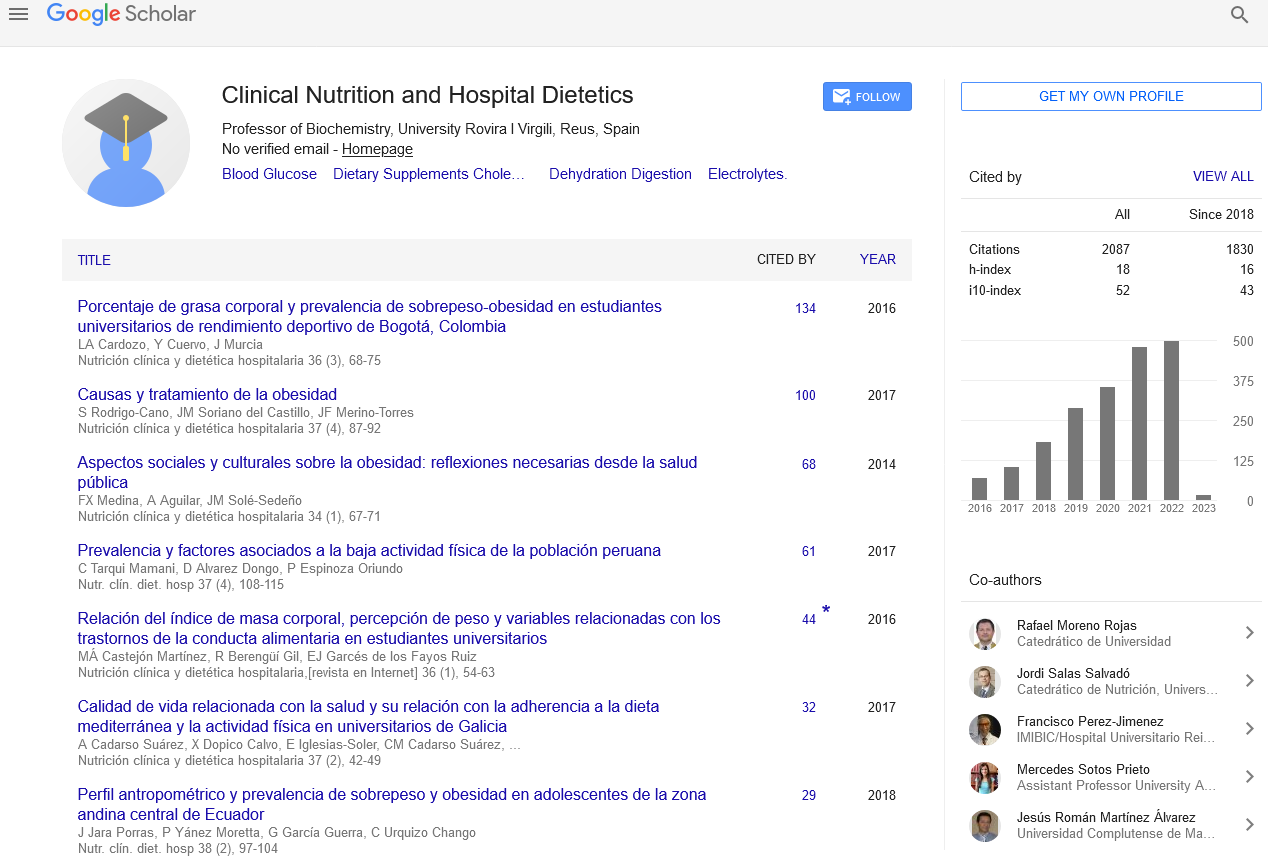Abstract
Nutritional assessment in surgical patients: association between subjective global assessment, nutritional screening tools and objective methods
Author(s): Daysa Hanusch, Flávia1; Bezerra da Silva, Maria da Guia1; Da Silva Prado, Leila Virgínia2; De Souza Costa, Milena Damasceno1; Pinheiro Gadelha, Patrícia Calado Ferreira1
Introduction: The presence of malnutrition in the preoperative period increases the frequency of infectious and non-infectious complications after surgery. Thus a careful assessment of nutritional status is required for the adoption of strategies to maintain or restore health.
Objective: To investigate the association between Subjective Global Assessment (SGA) and nutritional screening tools and classic anthropometry. Methods: Cross-sectional study conducted from February to July 2011, candidates for major surgery of the gastrointestinal tract, 18 years, of both sexes. The following data were collected: Nutritional Risk Score (NRS) and Nutritional Risk Index (NRI), SGA, weight, height and body mass index (BMI), arm circumference, triceps skin fold thickness, arm muscle circumference, adductor pollicis muscle thickness, albumin, total lymphocyte count, hematocrit and hemoglobin. Data were tabulated using the software Excel 2007 and statistical analyzes were performed using SPSS version 13.0 (SPSS® Inc., Chicago, IL, USA). Continuous variables were tested for normal distribution using the KolmogorovSmirnov test and, once all of them showed normal distribution, they were expressed as mean and standard deviation. To verify the existence of association between categorical variables, the chi square of Pearson and the Fisher exact test were used. For comparison between two groups, the Student t test was applied. The significance level of 5% (p <0.05) for null hypothesis rejection was used.
Results: 46 patients were evaluated, aged 56.24 ± 14.38 years, 67.4% (n = 31) female. Approximately 61% and 21.7% were classified as malnourished by SGA and BMI, respectively. Hypoalbuminemia was present in 41% of patients. The NRS tool has classified 65.2% of patients in moderate to severe nutritional risk while only 32.5% have had this classification according to the NRI. There was a significant association between SGA and weight loss percentage, NRS and NRI.
Conclusion: Weight loss percentage, NRS and NRI can be used as nutritional screening tools in surgical patients, since these screening tools have showed significant association with SGA, which is considered the gold standard tool in assessing the nutritional status of these patients. Key words: Nutritional risk. Preoperatively. Malnutrition. Anthropometry
Google Scholar citation report
Citations : 2439
Clinical Nutrition and Hospital Dietetics received 2439 citations as per google scholar report
Indexed In
- Google Scholar
- Open J Gate
- Genamics JournalSeek
- Academic Keys
- JournalTOCs
- ResearchBible
- SCOPUS
- Ulrich's Periodicals Directory
- Access to Global Online Research in Agriculture (AGORA)
- Electronic Journals Library
- RefSeek
- Hamdard University
- EBSCO A-Z
- OCLC- WorldCat
- SWB online catalog
- Virtual Library of Biology (vifabio)
- Publons
- MIAR
- Geneva Foundation for Medical Education and Research
- Euro Pub
- Web of Science
Journal Highlights
- Blood Glucose
- Dietary Supplements
- Cholesterol, Dehydration
- Digestion
- Electrolytes
- Clinical Nutrition Studies
- energy balance
- Diet quality
- Clinical Nutrition and Hospital Dietetics




